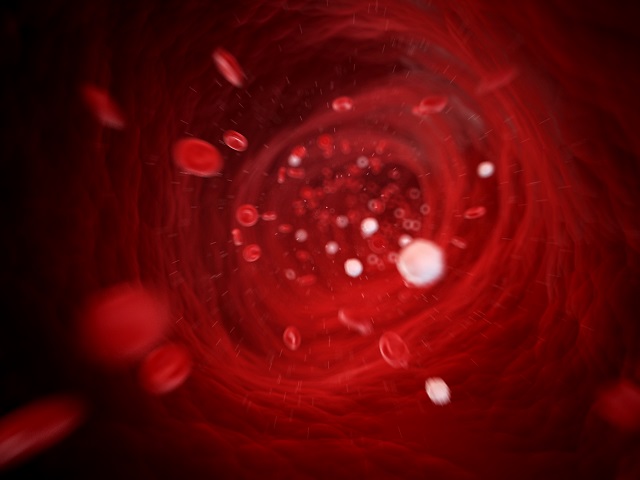Jan 28 2016
A team of researchers from Northwestern University have created a new biodegradable material integrated with vitamin A, which has the ability to prevent scarring in blood vessels.
 Credit - Sebastian Kaulitzki/Shutterstock.com
Credit - Sebastian Kaulitzki/Shutterstock.com
Scarring occurs as a natural part of any healing process; if the scar forms within the blood vessels it can lead to fatality.
When injury occurs, cells proliferate and migrate into the blood vessel, creating scar-like tissue. It can create blockages that impair blood flow.
Guillermo Ameer, Northwestern University
The biodegradable material with vitamin A, created by Ameer and his team, can prevent scarring and the subsequent dangerous damage. It is a soft elastic material which can be used to treat injured vessels as well as to manufacture medical devices, such as prosthetic vascular grafts and stents, to give them basic healing properties.
Cell migration is a key contributor to the scarring process. Initial tests reveal that the material could decrease cell migration by 57%. The research is based on the earlier work conducted by Ameer, where vitamin C was combined into a material’s structure which was used to grow tissues and enhance the function of vascular grafts.
Ameer and his team demonstrated that when vitamin A is locally applied it can slow down scarring in blood vessels. In this research the team combined vitamin A into the material, harnessing the advantageous properties of vitamin A and facilitating its use in wider application in medical devices.
The original antioxidant material is based on citric-acid and has antioxidant properties. It has groups that react with other acids. By using an acid form of vitamin A, we linked it directly to the material.
Robert van Lith, Northwestern University
This advanced biodegradable material offers two key benefits; its antioxidant element can decrease the oxidative stress - which causes chronic inflammation, and as the material degrades, vitamin A is released and helps preventing or reducing scarring.
The earlier material could be applied in open-heart surgery, while the new material could be used for all endovascular procedures. It could potentially be applied externally as wound-healing bandages for diabetic patients.
The chances for toxic build up are lower as the new material releases vitamin A as it degrades. Based on how the material is manufactured in the laboratory, the team can also control the speed the material degrades at.
Going forward, the team wants to investigate the material’s potential for further applications. Vitamin A is commonly known for its anti-aging properties, and topical antioxidants can be applied to enhance wound healing or battle cell damage.
Combining these two elements has great potential.
Robert van Lith, Northwestern University
The research was supported by the National Institutes of Health. It has been published online in ACS Biomaterials Science and Engineering. The paper’s first author, Robert van Lith is a postdoctoral fellow in Ameer’s lab. Ameer is a professor of biomedical engineering in Northwestern’s McCormick School of Engineering and of surgery in the Feinberg School of Medicine. He is also a member of the Chemical of Life Processes Institute, Simpson Querrey Institute for BioNanotechnology in Medicine, and International Institute of Nanotechnology.